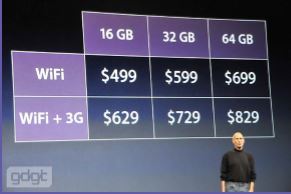- Have any questions?
- [email protected]
ANCHORING – DIGITAL MARKETING

THE POWER OF A/B TESTING
October 30, 2023Anchoring is a cognitive bias otherwise known as a heuristic, that describes the common human tendency to rely too heavily on the first piece of information you receive (the “anchor”) when making decisions.
The Psychology Dictionary says, “a heuristic is a mental shortcut that allows people to solve problems and make judgments quickly and efficiently. These rule-of-thumb strategies shorten decision-making time and allow people to function without constantly stopping to think about the next course of action.”
During the decision-making process, the Anchor Effect takes place when anchoring occurs, which happens when buyers use an initial piece of information to make subsequent judgments. For example, the initial asking price for a retail item sets the value, making the sale value seems more appealing. In other words, the mind is more biased by first impressions. In fact, every person depends on anchoring to help make daily decisions. When buyers need to choose between options, they look for a base from which to start—this is the anchor.
 A famous example (Figure 1) of Anchoring was when Steve Jobs first introduced the iPad. “What should we price it at?” he asked. “If you listen to the pundits, we’re going to price it at under $1000, which is code for $999.” He put a giant “$999” up on the screen and left it there before finally going on. “I am thrilled to announce to you that the iPad pricing starts not at $999,” said Jobs, “but at just $499.” On-screen, the $999 price was crushed by a falling “$499.”
A famous example (Figure 1) of Anchoring was when Steve Jobs first introduced the iPad. “What should we price it at?” he asked. “If you listen to the pundits, we’re going to price it at under $1000, which is code for $999.” He put a giant “$999” up on the screen and left it there before finally going on. “I am thrilled to announce to you that the iPad pricing starts not at $999,” said Jobs, “but at just $499.” On-screen, the $999 price was crushed by a falling “$499.”
By setting the value of the iPad (after selling the features and benefits that it had to offer) at $1000, in the minds of his buyers he set the Anchor (and the value) of the iPad so that anything less than $1000 seemed like good value.
Back in the 1990’s Williams-Sonoma introduced a new product to the market—a bread maker. After performing consumer research they decided to launch this new product into the market at $275. However, the sales were surprisingly poor. So they decided to produce a bigger and better bread maker at double the price, and sales took off! However, the item that was selling was the cheaper, original version. The problem was that the original bread maker had been an entirely new product to the market, so there was no anchor but with the introduction of a new bread maker, buyers now had an anchor to compare.
 A very simple way of using the Anchoring Effect is to ensure that when you’re promoting a product on sale that you also promote the original price.
A very simple way of using the Anchoring Effect is to ensure that when you’re promoting a product on sale that you also promote the original price.
In Figure 2, the email from Woot!, the sale price of $7.99 wouldn’t be as appealing or as effective if it didn’t also promote the original price of $17.99.


